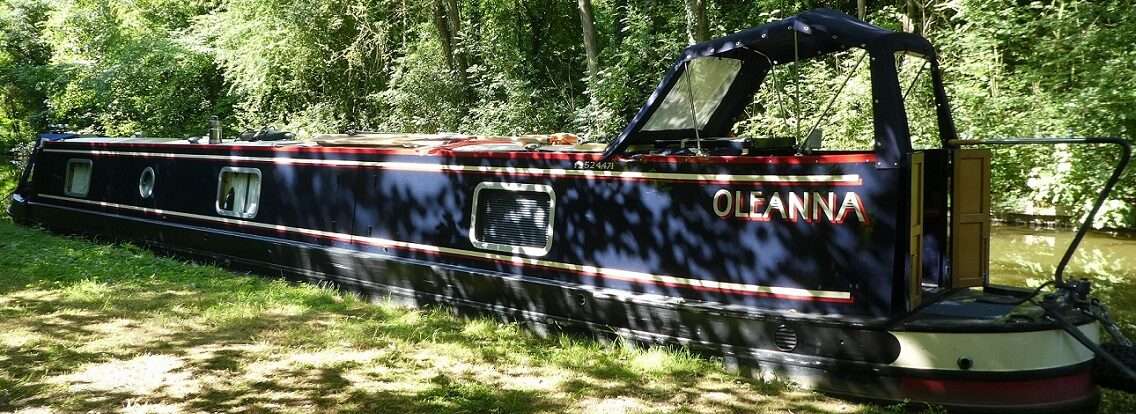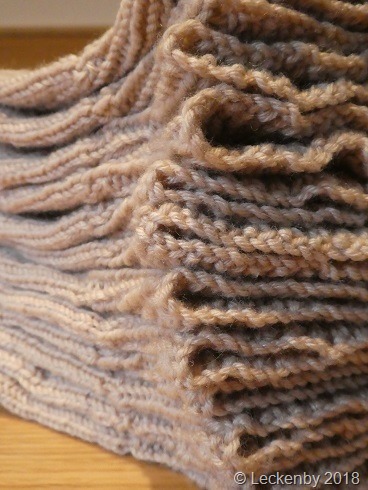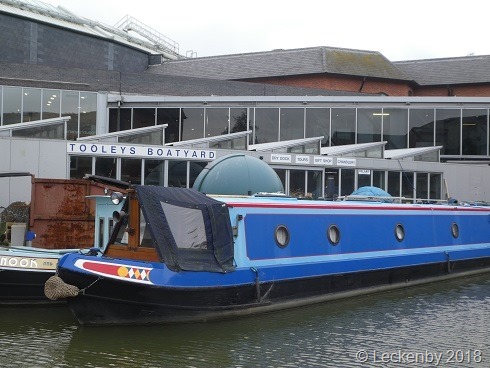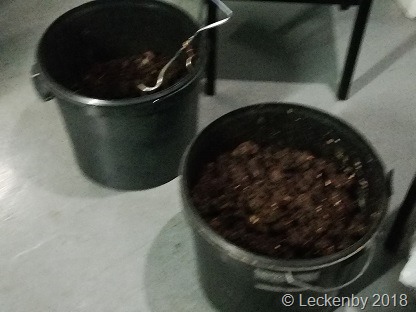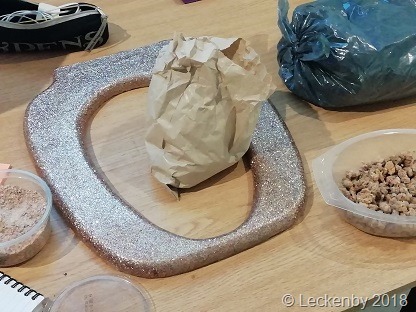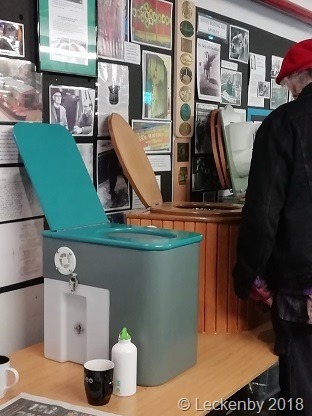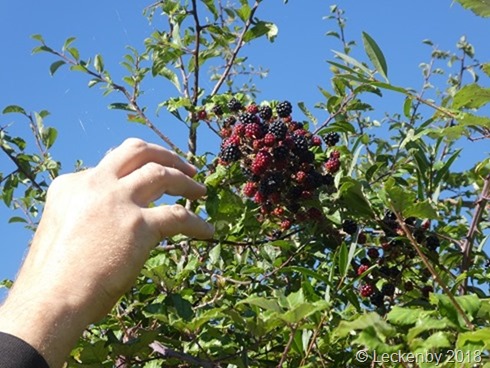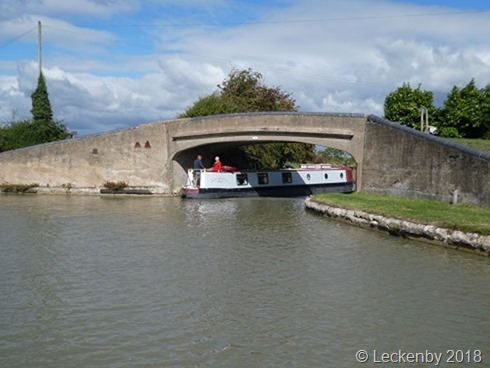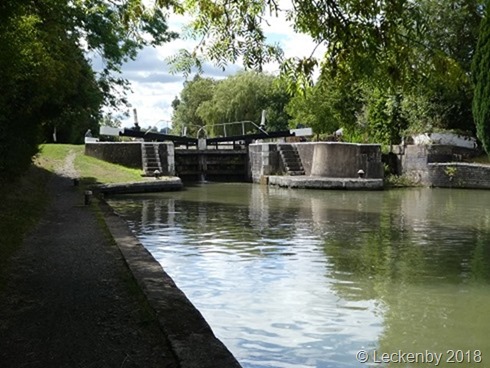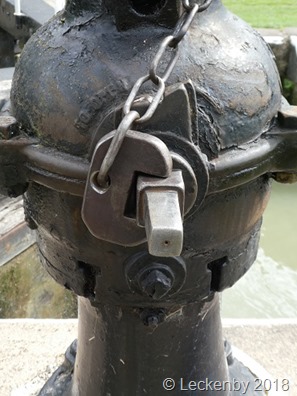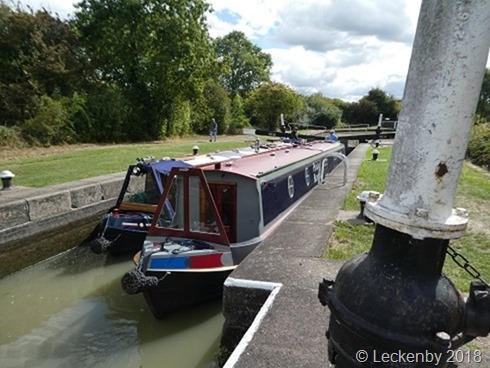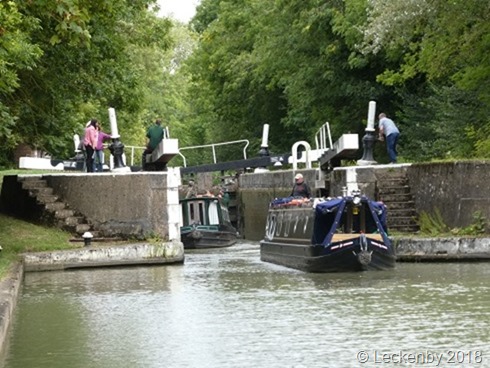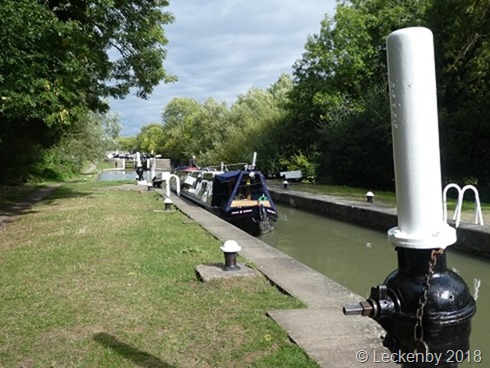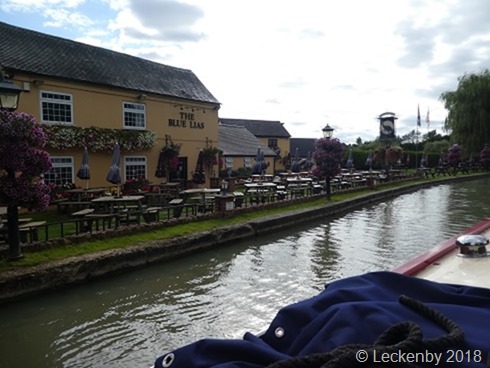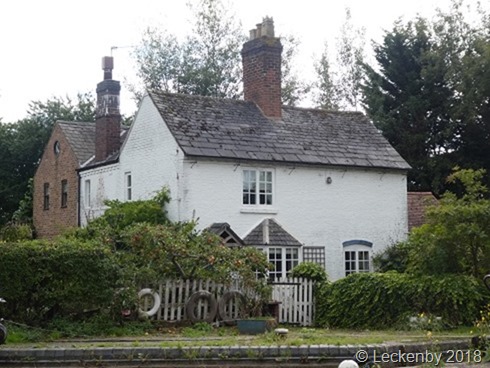Brinklow Marina, North Oxford to Lock 7 Long Buckby, Grand Union
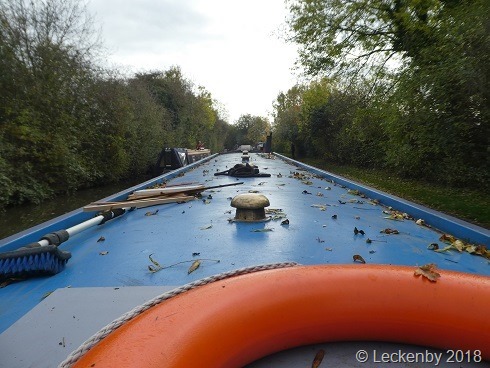
Today we’ve had a change of boat. This one currently has a bright blue roof and was built around 1995.
Becca and Sam bought their boat last summer along with her mooring at Three Mills in London. They lived on board hooked up until spring this year when they decided it was time to get some work done to her. Both of them are originally from the Sheffield area and ended up asking Jonathan Wilson (builder of Oleanna’s shell) who they should use to carry out the works in the south of England. His suggestion was Brinklow Boat Services who have spent much of the summer working on her on and off. Becca and Sam have spent most of this time sofa surfing around friends and family, but yesterday they picked their home up and moved back on board.
We’d last seen them in the summer at a wedding in Scarborough, got talking about our boats and discovered that they were planning on cruising her back to their London mooring, having done virtually no boating before. Naturally we offered to lend a hand and show them the ropes if we were still in the area. Reaching Banbury yesterday meant that we could catch an early train over to Rugby with a plan of meeting them at the moorings near Tesco. However they’d been held up leaving, but had managed to make it to near Brinklow Marina in the dark.
Excuse me!
A taxi ride got us to the marina gates where Becca met us, then a short walk down the towpath to their boat and Sam. They’ve had all sorts of work done, new floor as the old one was rotten, the batteries had corroded away the battery tray, the galley and bathroom have had lots done to them and they have a new Squirrel stove with a back boiler. We were slightly jealous of the boiler as we’d wanted one, but it proved problematic with the gas boiler that we’d specked on the same system. The copper pipes look lovely running through the boat to several radiators giving out heat. They’ve matched the galley and bathroom sink taps with the copper pipes and their pull out larder unit at the end of the galley is a great idea. All the cupboards have leather straps rather than knobs or handles. It’s going to be a lovely boat when all the work is finished and they’ve re-varnished and painted the interior. Next summer Becca plans on painting the cabin sides too.
Hello!!
Once we’d had a quick look round it was time to fire up the engine and set off, hoping to get through Braunston Tunnel and down the first lock of the Buckby flight before nightfall. The engine took a bit of stirring, but then kept going all day, grumbling at certain revs. I suspect after they have spent the next ten days cruising they’ll be jealous of our hospital silencer.
Sam took the helm and Mick gave guidance whilst Becca continued to unpack inside. Yesterday Sam’s Dad (Roger) had been on hand at the helm and helped them out of the marina. Today we hoped we’d be able to leave them more confident with cruising and handling locks. Progress was slow to start with, but as Sam grew accustomed to the helm the engine was pushed up a bit and our progress increased. It took over an hour to reach where we’d originally hoped to meet them near to Tescos. Passing through Newbold Tunnel gave us the chance to see what their tunnel light was like, not bad, but a bit of a pain to have to go to the front of the boat to turn it on.
Hello! Remember me!!
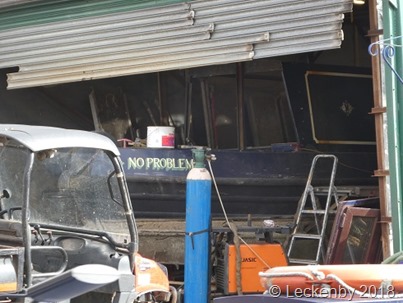
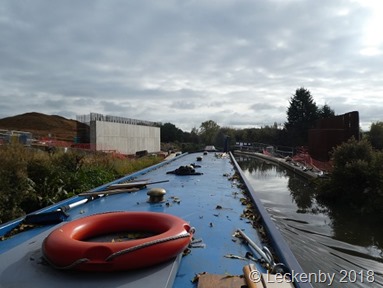 Their stocks of gas were low so when we saw NB Callisto we slowed to see if he’d sell them a new bottle. The gas he had was all spoken for so that would have to wait for tomorrow. The new bridge outside Rugby has come on since we came through. A concrete wall stands on one side of the cut and the reinforcement stands waiting on the other. At Clifton Cruisers Sam negotiated his way around the hire boats as we noticed NB No Problem in the shed. In the strong winds a few weeks ago a large tree fell onto NB No Problem and caused a lot of damage, luckily nobody was injured. We could see a welder busy inside the shed and it looked like a lot of work was happening to the cabin sides.
Their stocks of gas were low so when we saw NB Callisto we slowed to see if he’d sell them a new bottle. The gas he had was all spoken for so that would have to wait for tomorrow. The new bridge outside Rugby has come on since we came through. A concrete wall stands on one side of the cut and the reinforcement stands waiting on the other. At Clifton Cruisers Sam negotiated his way around the hire boats as we noticed NB No Problem in the shed. In the strong winds a few weeks ago a large tree fell onto NB No Problem and caused a lot of damage, luckily nobody was injured. We could see a welder busy inside the shed and it looked like a lot of work was happening to the cabin sides.
I’m still here, I’m quiet without my collar.
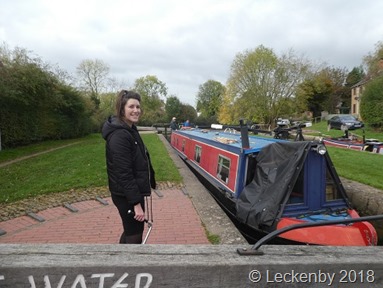
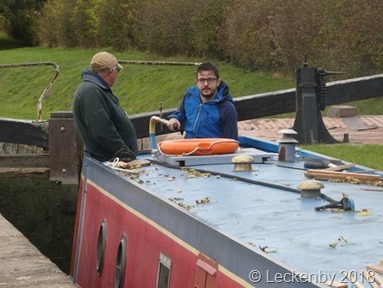 Approaching Hillmorton Locks a Lockie set one of the locks for us and as Sam brought the boat into the lock Becca and I hopped off. These three locks would be the only narrow locks they’d come across on their cruise, quite handy as an introduction being lighter than the broad locks they would live with for the next ten days. A work boat came up the lock next door and the lady was very keen to give us a hand, but when I explained that these were their first locks of many she held back and left us to it. This did give them the chance to get ahead of us.
Approaching Hillmorton Locks a Lockie set one of the locks for us and as Sam brought the boat into the lock Becca and I hopped off. These three locks would be the only narrow locks they’d come across on their cruise, quite handy as an introduction being lighter than the broad locks they would live with for the next ten days. A work boat came up the lock next door and the lady was very keen to give us a hand, but when I explained that these were their first locks of many she held back and left us to it. This did give them the chance to get ahead of us.
Hello, my bowl got empty far quicker than normal!
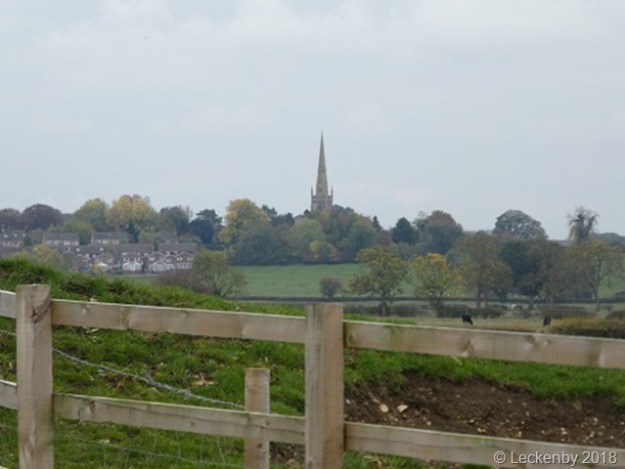
In the next lengthy pound we had some food whilst cruising along. No time to stop we had miles to cover to get to do one down hill lock with them.

Straight on at Braunston Turn but no sign of another boat to share the locks with.
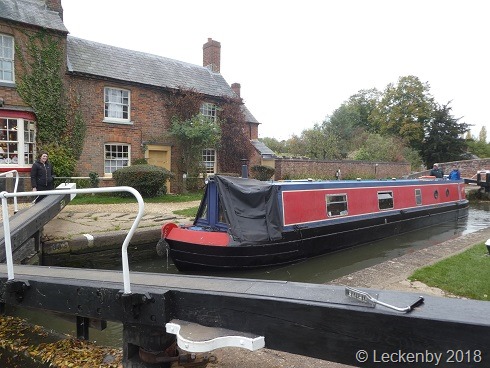
This was quite handy really as at this time of year they are quite likely to have to do the locks on their own and more importantly we could take our time to explain things to them and try to impart as much knowledge as we could whilst doing the flight.
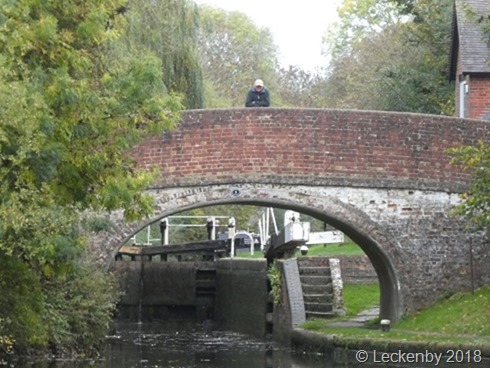
By the time we were three locks up Mick left Sam on his own at the helm and walked ahead to set the next locks. A boat was coming down so the boats had to pass in the next pound, Sam managed to hold his course and hovered without feeling the need to tie up and wait. By the top lock Becca was getting the hang of doing everything in the right order and safely.
The stove went out ages ago!
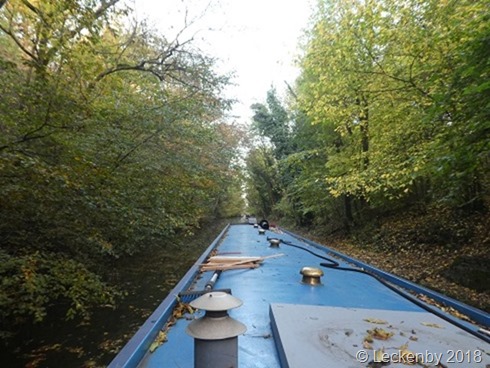
Tunnel light on, chimney removed, and a handy light the boat yard had left onboard was popped onto the hatch for extra light at the stern. Sam still at the helm was about to do Braunston Tunnel, our least favourite on the network. We had the tunnel to ourselves, no one coming towards us, Sam held his line well, not one bump. By the time they reach Islington Tunnel, which is one way traffic, they will be more confident and hopefully they won’t do too much preparation for repainting the grabrails.
It’s getting past my dingding time.
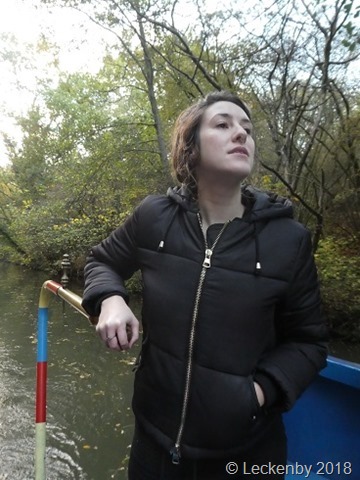
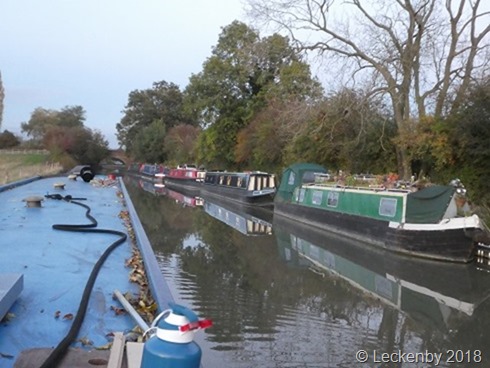 Becca took over at the helm and cruised us to Norton Junction and then the top of the Buckby Flight. The sun was sinking fast now, we decided it was still worth doing the top lock, so that we’d at least taken them through one downhill. So long as you keep away from the cill and don’t get caught on the bottom gates, going down hill is easier, far less instruction was needed. Sam and I worked the lock in the dark as the light kept flicking on and off at the pub.
Becca took over at the helm and cruised us to Norton Junction and then the top of the Buckby Flight. The sun was sinking fast now, we decided it was still worth doing the top lock, so that we’d at least taken them through one downhill. So long as you keep away from the cill and don’t get caught on the bottom gates, going down hill is easier, far less instruction was needed. Sam and I worked the lock in the dark as the light kept flicking on and off at the pub.
We’d reached our aimed mooring, one lock further than they had planned and we’d had three to four miles extra to do too. This was as far as they would be able to go today anyway as the rest of the flight of locks are still being locked overnight to help with water levels. A space quickly showed itself and spikes were hammered into the ground in the dark.
And it is days past morning dingding time!!!
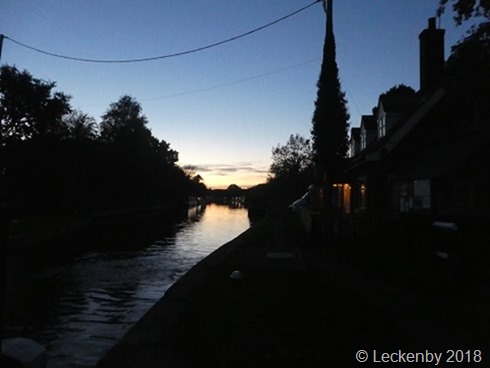
A shame we’d not arrived in day light, it was 7pm and we’d still got to get the train home. Sadly no drinks with them at the end of the day in the pub. They had to go to be able to charge their phones after discovering yesterday that they don’t have an inverter and there isn’t one 12 volt socket anywhere on board! Suspect they’ll enjoy their evenings so long as they find a pub.
We walked down the flight past the locked gates of the next lock and joined the road leading to Long Buckby Station. We arrived just at the right moment as a train was pulling in that would take us as far as Coventry where we’d change to get back to Banbury. A long but enjoyable day. We wish them luck for the rest of their journey to London.
Long!! Long Day!!!! Tell me about it! One very long, cold, boring, hungry day! Tomorrow had better be better than today and yesterday.
10 locks, 18 miles, 1 leftish, 1 rightish, 1 tunnel with 2 mysterons, 4 trains, 1 taxi, 1.5 miles walked by torch light, 2 newbies, 0 inverter, 0 hosepipe, 1 new one on the way with Roger, 3 baskets, 1 slash curtain, 3 cuppas, 9 up, 1 down, hope they can remember how to go up again when they get to do it again, 1 hungry cat who should be more proactive about food.





















